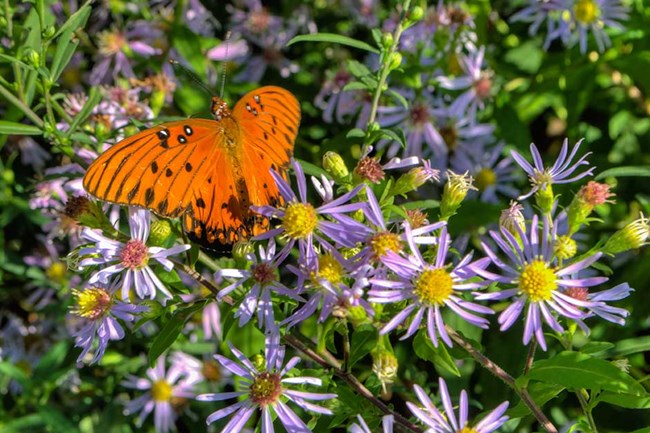
Robert Stephens photo When Will The Leaves Change?
The beauty of autumn attracts large numbers of sightseers to the Blue Ridge Parkway and people often ask when "peak" season will occur. In a park that is nearly 470 miles long and varies over 5,000 feet in elevation from its highest peaks down to the foothills, there is no simple formula for predicting fall color. The intensity of fall color and time of peak color vary and are determined by complex environmental factors, as well as the genetic makeup of the plants themselves. These factors vary from plant to plant and from region to region. In fact, the timing of fall color change depends upon so many variables that the exact dates of "peak" season at specific locations along the parkway are impossible to predict in advance.
At higher elevations, where the climate is similar to New England's, scattered trees sometimes begin developing fall color as early as late-September. However, the majority of trees typically change color during the month of October, starting early in the month on the highest peaks and progressing down the mountainsides into the lower elevations as the month passes.
How Will The Color Be This Year?
Whether leaf color for any given year is classified as "spectacular" or simply as "average," the display will nonetheless be pleasing to the eye somewhere along the parkway. One reason is the parkway's amazing diversity of trees. Some 100 species of native trees grow in the southern Appalachians and the majority of these are deciduous. Various species change color at different times over a long fall season.
The "best" fall color for an area occurs during the shortening days of autumn when days are bright, sunny and cool, when nights are cool but not below freezing, and when there has been ideal rainfall. Adequate rainfall also keeps the leaves on the trees longer and enhances the color. Wet, cloudy, warm weather or exceptionally low temperatures in early fall tend to mute the much anticipated autumnal display. We don't yet fully understand all of the complicated actions - and even more complicated interactions - involving pigments, sunlight, moisture, chemicals, hormones, temperatures, length of daylight, site, genetic traits, and so on that make for a perfect autumn color display. As research probes deeper into the basics of plant life, we will understand more about the processes that color the autumn landscape.

Kristina Plaas photo Why Do Leaves Change Color?
As summer ends, the green pigments in leaves deteriorate, giving other colors a chance to shine. Carotenoids, the pigment that makes carrots orange and leaves yellow, are exposed as the green fades. Reds and purples come from anthocyanins, a pigment that is formed when sugars in leaves break down in bright autumn sunlight.
. Fall Wildflowers
Vividly colored fall leaves may grab your attention, but don't overlook the parkway's fall wildflowers which bloom in profusion along the road and trails.
|
Last updated: July 26, 2021
